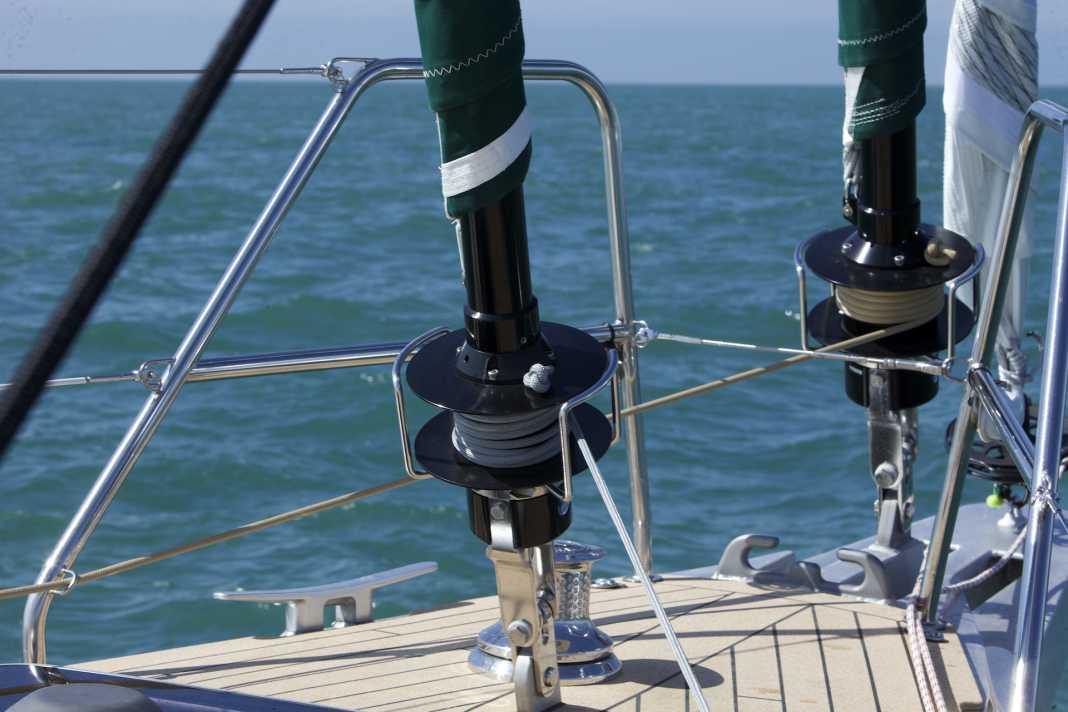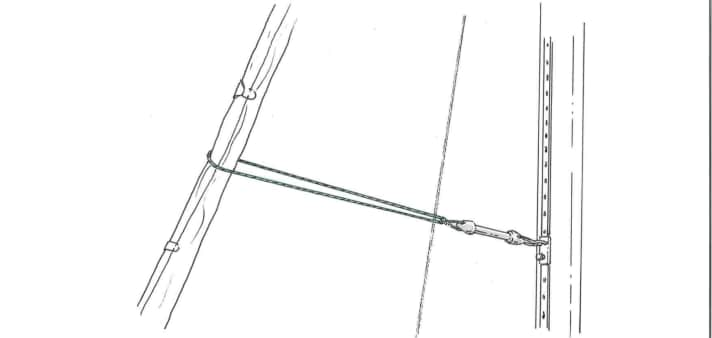





Forestay lifehack 1: How to combat annoying mast vibrations with a shock absorber

The swinging up of the mast is particularly disturbing at night. Sometimes the rig shakes so violently that sleep is out of the question. We have found that the cause of the swaying is the flapping of the wind-prone furled headsail. To extract the energy that causes the mast to swing up, we use an end that is attached to the fitting for the spinnaker pole on the mast and is then passed around the forestay. Between the forestay and the mast we tension a shock absorber with a medium pre-tension, which reduces the energy of the oscillation. The degree to which the shock absorber needs to be tensioned should be tested on a case-by-case basis. With the correct pre-tensioning, the oscillation starts briefly, but is quickly reduced again. This ensures a peaceful night's sleep even in windy conditions.
Oliver Ebsen, Möhnesee
Forestay lifehack 2: Clean forestay profile

When the mast is lowered at the end of the season and the boat is made ready for winter storage, cleaning the rig is also on the work list. Dirt can accumulate in the groove of the forestay profile in particular. However, as we don't lay the mast in winter, this otherwise quite simple task is somewhat more difficult. This is how we proceed: The halyard is attached to the furler with a large shackle and the handle of the deck scrubber is inserted through it. Connect the water and off you go. Don't forget the safety line to pull the scrubber back down. Ready for the Stag wash.
Janni Maraner, Bolzano
Forestay lifehack 3: Better than golf

We use headsails with classic stay riders on our boat. However, we found it annoying that the staysails sometimes slipped over the press sleeve at the lower end of the forestay and got caught there. The remedy was a golf ball. We drilled a hole in it and sawed it open along the hole. We wrapped the affected area of the stay directly above the ferrule with adhesive tape and glued the ball in place with epoxy.
Günter Löffler, Uetersen
Forestay lifehack 4: The handle for safe staying

As we get older, it becomes increasingly difficult to frequently board a sailing boat without a furling jib from the jetty via the bow, especially as you often have to manoeuvre around a forestay that cuts into your hands. We couldn't find a solution in specialised shops. A piece of teak sawn lengthways and rounded off helped. A slight groove was milled into the centre of the inside of each half using a four millimetre thick rose drill bit (these are fitted with a milling ball at the front end). The halves are pressed against the forestay with a Velcro strip screwed to the wood after being deflected through the eyelet and pulled firmly. This prevents it from slipping and provides a very good hold.
Peter Willigerodt, Berlin
Do you have any advice for other sailors?
We will honour the publication of your lifehack with 50 euros. Please add photos or sketches. We also need your address so that we can send you a crossed cheque.
Submissions to: Editorial office YACHT, Gänsemarkt 24, 20354 Hamburg or: mail@yacht.de.
